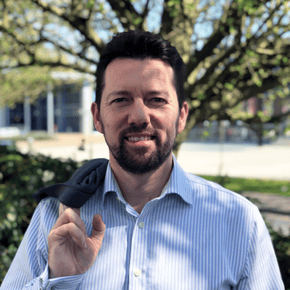I‘ve recently been carrying out stakeholder interviews for an international client with a distributed workforce around the globe. Coordinating stakeholder interviews in a UK based organisation in itself can be challenging, so tackling a global organisation with multiple locations creates a whole new set of issues.
I’ve compiled the 5 main points to consider when interviewing international stakeholders.
1. Select the right Project Manager
A Project Manager needs to be highly organised for any stakeholder interviews but even more so when conducting international interviews.
They will need to ensure they have the interview questions prepped and sent out to interviews before they take place. This will give participants time to ask questions or even prepare responses in advance. It will also give those speaking another language time to get the questions translated.
2. Differing Time zones
When you have a disparate workforce located across the world (I’m currently interviewing staff in Australia and Japan) you’ll need to consider varying time zones. Your daytime could potentially be their evening so finding a time that is mutually convenient will be necessary.
Try and select a time that suits your interviewee. Think about the time of day when they are likely to be the most receptive. If you’re interviewing someone in Australia it may be 9 am in your country but they may be coming to the end of their working day. Interviewing at this time may not be as productive as a meeting at the start of their working day.
3. Cultural Differences
Make it ‘glocal’, your intranet may be a global one but content will need to stay relevant on a local level. What type of information affects different departments and locations within the business?
If you’re interviewing overseas staff, it’s highly likely there will be a language barrier. To assist me with interviews I conducted in Japan I enlisted the help of an interpreter.
You may also have to accommodate different working patterns. A sales associate in the UK and one in the US may have the same job role but the hours they work may be entirely different.
4. Overcoming the the distance
It may be virtually impossible to visit each and every location of a business to interview staff, you should be able to conduct most interviews with telephone conferencing. However, I find that where there is a language barrier, video conferencing is preferable. This way you can see the facial expressions and gestures of the interviewee, helping you understand if they are struggling to understand phrases or terminology.
5. Understand the business infrastructure
Make sure you are well acquainted with business infrastructure and if there are any existing issues. Where are sites located? Do they have poor internet connectivity? You may have users in extremely remote places with little or no internet connection.
Be mindful of any limitations when speaking to interviewees. Staff may have unrealistic expectations of what can be achieved.
Once you’ve completed all your interviews, it’s a good idea to create a visual representation of all the interviews that you’ve conducted.
This picture can be used as part of your launch to depict the ‘story’ of how the intranet evolved. This will give your staff an idea of the size and scope of the project, as well as seeing that their opinions really did count and have been considered in the decision making process.
Have you had a global intranet delivered within your organisation? RT your comments below.


